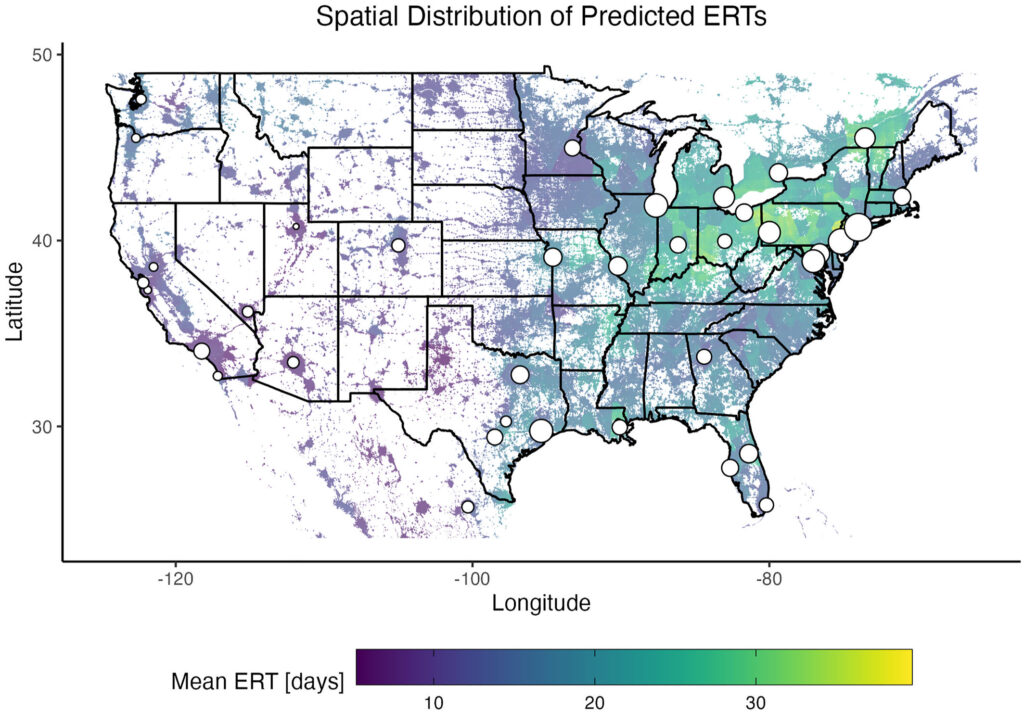Editors’ Highlights are summaries of recent papers by AGU’s journal editors.
Source: AGU Advances
Carbon dioxide (CO2) is a key driver of global climate change and the ability to monitor human-based emissions of this gas is crucial for quantifying the effectiveness of carbon-reduction policies. In recent years, space-based platforms like the Orbiting Carbon Observatory (OCO-2 and OCO-3) missions have provided atmospheric CO2 observations with near-global coverage and efforts to ingest these data into local, regional, and national carbon accounting methodologies have been successful. However, space-based observations are influenced by physical and environmental factors that affect their coverage.
Roten and Chatterjee [2025] investigate these factors and determine that the time needed to constrain emissions varies among cities within the United States. Key factors that affect these space-based platforms include the type of orbit they are in, the location of clouds in Earth’s atmosphere, and the distribution of atmospheric aerosols. The characteristics of the instruments’ orbits also vary the frequency of urban observations in both space and time. Results show that cities on the west coast are more frequently observed than cities in the northeast. These limitations should be considered when cities are seeking to monitor their emission reduction efforts with space-based technologies.

Citation: Roten, D., & Chatterjee, A. (2025). Coverage-limiting factors affecting the monitoring of urban emissions with the orbiting carbon observatory missions. AGU Advances, 6, e2024AV001630. https://doi.org/10.1029/2024AV001630
—Don Wuebbles, Editor, AGU Advances

